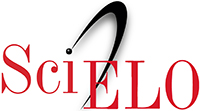Incidence of Fusarium graminearum and DON in malting barley grains (Hordeum vulgare L.)
DOI:
https://doi.org/10.48162/rev.39.134Palabras clave:
Cebada, Fusarium graminearum, incidencia, Deoxinivalenol, inocuidadResumen

Fusarium graminearum is a fungal species affecting the quality and safety of malting barley grains, one of the most important cereals worldwide. Fungal growth and mycotoxin production vary among growing seasons and sowing locations, mainly due to weather conditions. This work aimed to assess the incidence of F. graminearum and the contamination with Deoxynivalenol (DON) in 40 barley grain samples from different Buenos Aires, Argentina localities during the 2017 and 2018 growing seasons. F. graminearum was identified in 80% of the samples. It was isolated in eight of eleven localities in the first and ten in the second growing seasons, with a similar maximum incidence (20% and 17%, respectively). On the other hand, all samples were contaminated with DON, and 75% exceeded the maximum limits established by The European Union (EC 1126/2007). The level of DON contamination was significantly higher in the second growing season, which was rainier and had a higher mean temperature (an average of 2.5 ppm in 2017 and 3.75 ppm in 2018). The results obtained in the present study show the need to establish regulations in Argentina on maximum limits of Fusarium mycotoxins in barley.
Highlights:
- Barley is the main raw material in the brewing industry and is often associated with F. graminearum infection.
- Fusarium graminearum was isolated from 80 % of the barley samples analyzed whereas all samples were contaminated with DON.
- DON level in most of the barley samples exceded the maximun limits of 1.25 ppm established by The European Union.
- The level of DON varied among growing season been higher in the rainiest growing season.
- The protein content and the incidence of F. graminearum showed a low correlation (r = 0.226, p >0.05).
Descargas

Descargas
Publicado
Cómo citar
Número
Sección
Licencia
Derechos de autor 2018 Revista de la Facultad de Ciencias Agrarias UNCuyo

Esta obra está bajo una licencia internacional Creative Commons Reconocimiento-NoComercial-CompartirIgual 3.0.
Aquellos autores/as que tengan publicaciones con esta revista, aceptan las Políticas Editoriales.










.jpg)




